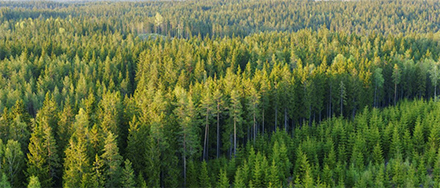Scientific journal Nature has published a paper reporting on dramatically increased levels of forest harvesting, which is not consistent with Swedish statistics and according to Skogsstyrelsen – the Swedish Forest Agency, it is based on dubious methods.
In a scientific paper, a research group reported that the area of harvested forest in Europe increased dramatically after year 2015. They reported, among other things, that the harvested area within the EU has increased by 49% during the period 2016-2018, compared with the period 2011-2015, and that Sweden and Finland contribute substantially to this development.
This reported dramatic increase in forest harvesting is not consistent with Sweden’s national statistics. On the contrary, statistics from The Swedish Forest Agency and the Swedish University of Agricultural Sciences show that the harvested forest area has decreased within the studied time period.
“When we compare the period 2011-2015 with 2016-2018, we calculate that the area harvested annually has decreased by approximately 8%” said Jonas Fridman, Head of Programme of The Swedish National Forest Inventory at the Swedish University of Agricultural Sciences.
According to the National Forest Inventory, a survey conducted in the field with objective statistical methods, the area of harvested forest in Sweden has been around 200,000 hectares per year during the past decade, while the volume of harvested wood has increased steadily during the same period.
Both the volume of harvested wood and the Swedish wood consumption have increased by 4% on average annually, comparing the period 2011-2015 with 2016-2018. This is far from the dramatic increase reported in Nature, according to Jonas Paulsson, statistician at The Swedish Forest Agency.
Several problems in the methodology exist.
The article in Nature has been written by a group of researchers at the EU Joint Research Centre (JRC) in Ispra, Italy. They have used global maps over harvested forests, which have been compiled through analysis of satellite images by the Global Land Analysis and Discovery group at the University of Maryland (UMD GLAD).
“Both the satellite images, and the methods used to analyse them, have improved over the years, which means that more harvested forests are identified in the images in the latter years of this data set.
“I have had confirmation from researchers at UMD GLAD that this data cannot be used in the way JRC Ispra have used it,” said Håkan Olsson, professor in forest remote sensing at the Swedish University of Agricultural Sciences.
The article contains other doubts, such as attempts to disregard the effects of certain types of forest damage but not others.
Forest Machine Magazine is written and edited by a forest professional with over 40 years hands on experience. We are dedicated to keeping you informed with all the latest news, views and reviews from our industry.
To support us you can subscribe to our bi-monthly magazine which is delivered to your door from only £30 per year.
Subscribe here

